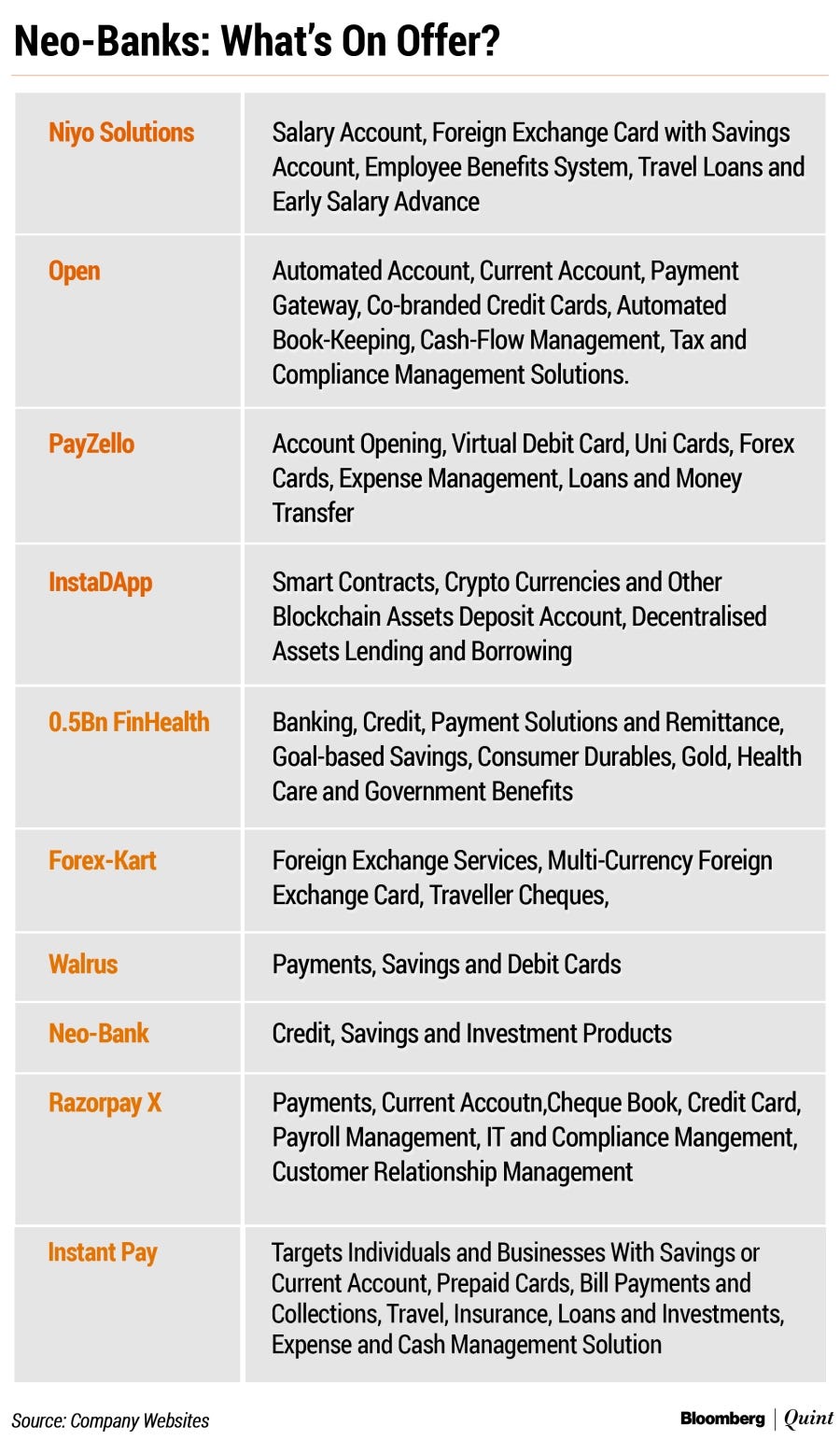an overview of the market with the different neo-banking fintech players in India
Fintech startups in India raised a whopping $3.7 billion in 2019 alone, and for good reason. India has the highest adoption rate for fintech services in the world! Not only that, but India’s annual return on investment on fintech startups is also the highest in the world at 29%, compared to the world average of around 20%. So clearly, fintech players are one of the safer bets in the Indian startup ecosystem, at the moment. Entrepreneurs and venture capitalists, both have come to realise this rather early, and this has resulted in a flurry of fintech startups popping up, offering a slew of different services from online wallets to digital lending… to now, neo-banking.
Many new ‘neo-banking’ startups have come up in the country and have already raised north of $90 million! The global neobank market was worth USD 18.6 billion in 2018 and is expected to accelerate at a compounded annual growth rate (CAGR) of around 46.5% between 2019 and 2026, generating around USD 394.6 billion by 2026! So yes, it is a growing and important domain of the online banking industry.
But what even is a neo-bank? How do they work?
Let’s break it down.
“What are neobanks?”
A neobank exists solely online — without any physical brick-and-mortar branches, independently or in partnership with traditional banks. These ‘banks’ offer various digital financial services like current and savings accounts, payment, and money transfer. Being digital-only enables them to navigate and comply with the regulatory environment.
“So they work with private banks?”
Well, yes and no. They do not (or rather, are not allowed to) offer any of the key services that a bank provides such as deposits, interest on deposits, or loans. The Reserve Bank of India (RBI) remains stern in prioritising banks’ physical presence and lately reinforced the requirement for digital banking service providers to have some physical presence.
They partner up with banks and do sourcing and front-end management while all the transactions are processed by the banks. Imagine them being like the banks’ sales agents of sorts! They attract customers through their user-friendly platforms and diverse services which they offer. And all of the resulting transactions are done on the banks’ back-end.
Why are banks party to this?
Traditional banks are willing to work with such startups to build a differentiated or targeted business proposition for certain segments and get whatever incremental business and revenue that they bring in. While sharing some of their back end foundations with these neobanks.
So, to set up a new account, you could just log onto any one of the neobank platforms and initiate the process. The partnered bank will remain the main custodian of all customer information. All transactions will be authenticated by the bank and flow through the bank’s fraud monitoring processes, even though they are getting initiated by a third party(in this case the neobank).
Although, experts believe that such services are still new and there is room to experiment to find the right product-market fit, as long as the core promise of the underlying banking product is not being broken.
“But why do we even need neobanks?”
- Unique Customer Experience– The customer gets to interact with banking services in a unique and much-improved manner. Neobanks are capable of providing a highly enhanced and personalized customer experience, which the traditional banks famously lack.
- Transparency: Neobanks are transparent and strive to provide real-time notifications and explanations of any charges and penalties incurred by the customer.
- Deep insights: Most neobanks provide solutions with user-friendly interfaces and easy to understand and valuable insights for services such as payments, payables and receivables, and bank statements.
Indian Players
There are about a dozen neobank startups in the country offering different services and partnering up with various private banks.
NiYO Solutions and OPEN are the most prominent ones, going by the funding raised and traction received by users.
The capital raised by NiYO would be deployed towards developing and introducing new product offerings faster, enhancing distribution and marketing and looking at international markets for expansion particularly the emerging markets that can be digitally disrupted through the neo-bank concept, the company said in a statement. The startup offers two solutions, Bharat Payroll solutions that provide modern salary account for India’s blue-collar workforce and Global Card that offers banking services for travellers.
Another such platform, Open, pitches itself as a “business banking service that combines everything from banking to invoicing and automated bookkeeping in one place”. Teaming up with ICICI Bank, Open allows its customers to connect all of their accounts across over 60 banks and provides a prepaid business card, powered by Visa Inc., for small businesses to manage their employees’ expenses.

Although digital and neobanks are gathering momentum, most are yet to show sustained profitability. Nevertheless, they have great potential to be disruptors in banking and financial services, and the key towards becoming profitable entities would be to convince traditional banks to invest in new-age technology and re-engineer processes to provide seamless and swift customer experiences.

